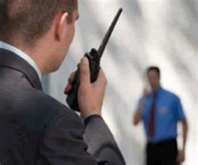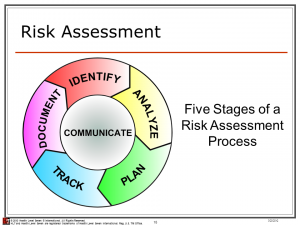Outsourcing Loss Prevention: is it worth it?
 Outsourcing is not a new concept but one that is growing by leaps and bounds across all corporate environments. Originally, only large corporations engaged in the outsourcing of business units and tasks. Now the concept is invading the mid-sized market as a viable business strategy.
Outsourcing is not a new concept but one that is growing by leaps and bounds across all corporate environments. Originally, only large corporations engaged in the outsourcing of business units and tasks. Now the concept is invading the mid-sized market as a viable business strategy.
According to the Outsourcing Institute, in 1996 outsourcing was viewed as a viable means to achieve cost control or economies of scale. Today outsourcing is an essential management tool for success in business innovation, global expansion and competitive advantage.
Many companies, regardless of size or product, have found that outsourcing non-core competencies has allowed them to achieve greater financial success while gaining additional and previously unavailable resources.
As an example, how does this affect the trucking industry? The core competencies of the trucking industry surround the timely movement of freight. The security of this freight and the potential for loss, a non-core competency, is a significant candidate for outsourcing. The management of transit and other liability claims is one example of outsourcing already familiar to many trucking operators.
In today’s environment, freight loss poses a significant threat to profitability. The maintenance of a centralized security or loss prevention unit can so easily become a costly overhead with less than satisfactory return on investment. Frequently, overinflated management with layers of administration reduces productivity. At the other extreme, forcing a security department to become too lean to be a real value is also pointless. Real effectiveness comes from the ability to call upon additional expertise and resources when they are needed. An efficient security director is in a position to recognize and justify such needs.
In some situations, the security function has been perverted by unnecessary and unproductive demands from senior managers. When the security department is viewed as a SNOW Department–”stuff no one else wants”, they are tasked with requirements that are contradictory to, and interfere with, their primary responsibility for security of corporate assets. Actual examples of such requirements being placed on the security department include:
- Sharing their vehicles with other departments, causing delays in accomplishing security responsibilities due to lack of transportation.
- Picking up the children of senior managers from their school and acting as babysitters because the manager’s wife wanted to go shopping without the children
- Routinely delivering office supplies to other company locations.
- Changing daytime work assignments to “chaperone” painters in the building at night, a normal Maintenance Department function.
Reliance on law enforcement is no longer part of the protection plan. Law enforcement agencies, for a variety of reasons, respond to public demands to the frequent exclusion of your business interests. Business losses are frequently considered nothing more than “the cost of doing business”, even to the extent that investigators and prosecutors take the view that the business owner can afford it.
Therefore, loss prevention and recovery rests almost entirely on your business strategies. A department store Vice President for distribution complained bitterly that his company was unable to persuade a district attorney to prosecute in a case involving high volume product theft in their distribution chain. Weaknesses in the company’s own security planning and resources were in part responsible. How to best meet your needs is utilization of all available security and loss prevention related resources.
What Are the Advantages of Outsourcing Your Loss Prevention Function?
- Distance Management of a loss prevention function with extended geographical responsibility is an expensive venture. As the geographical area expands, efficient control of loss prevention activities may be reduced by distance, international boundaries, and even time zone differences.
- Cost-savings In-house management costs increase even as the slightest geographical and business responsibilities increase. Outsourcing budgets are much more focused on a return on investment rather than maintenance of in-house specialist costs. Why? One reason–visibility.
- Visibility The daily inefficiencies, distractions and politics of the in-house function are replaced with a cost and time sensitive, performance driven service. Outsource vendors cannot afford the inefficiencies so easily tolerated by corporate employees and employers whose ability to discern a “busy” department from a “productive” department is limited.In-house loss prevention functions frequently, over time, result in empire-building. “I am a manager, therefore I need a secretary to handle my calls.” Sometimes even the secretary believes that an assistant is needed. Now we have to make some “busy work” to justify the salaries of the additional staff. This in most cases ends up with a “top heavy” organization with more bosses than workers. Costs rise and productivity remains constant in spite of additional staff members. More is not necessarily better–efficiency of effort is all important. “What is the return on investment for each additional staff member?” should be the manager’s constant question.
- Focus Another advantage of an outsourced loss prevention and security function is that the essential day-to-day operations are delegated to the outsource vendor, allowing management to focus on their corporate goals. The outsource vendor does not operate in a vacuum–frequent, but cost-effective interaction with a management representative provides the collaborative exchanges necessary to meet corporate objectives. The outsource service vendor is a vital element of your management structure but without the many ancillary costs of an in-house department.
- Capabilities Outsourcing can lead to expanded capabilities within the national and international marketplace. The outsource vendor may have international contacts and associations with which to serve the freight industry. This allows a freight company operating in or planning to enter the international arena to have access to qualified and knowledgeable loss prevention network throughout the world.Have you seen the proposed operating cost budgets for opening up a new area service? How often do you take big risks just to keep the startup costs down? The economies of scale available through the outsource vendor provide the business manager with resources without the residual costs of having an agent in place, just waiting for work to come his way.
- Resources The major advantage of outsourcing freight industry needs is the diverse and valuable availability of resources not normally found within the business unit. Can you imagine the manpower costs of having to maintain all possible resources within your business–a loss prevention risk analyst, forensic accountant, security system integrator and design specialist, investigators, etc? Many of these individuals would be used on a very limited basis at high cost to your business. The outsource vendor provides these individuals on an as-needed basis through alliances with other similarly placed associates.
Consider This While Pondering Outsourcing Los Prevention
- Currently there is a considerable battle for talented staff.
- Unless the individual can be fully utilized at the individual’s level of competence, the probability of recurring employee turnover exists.
- With a multitude of requirements, the outsource vendor can financially justify employment of talented parties to service numerous clients without compromising client confidentiality.
- The shortage of talent within the international market is particularly evident.
- Due to different cultural and ethical considerations, an extended vetting period is required to identify qualified international staff members.
- The outsource vendor’s experience, contacts and associations will serve your corporate objectives much faster.
- The most productive and budget conscious Security Directors commonly use their outsource relationships to meet peaks in demand.
Visibility Means Knowing Where You Are
Through the outsourcing venture, business risks are shared. The outcomes expected from the vendor can be quantified to establish realistic benchmarks for program success. Goals are identified and remuneration is contingent upon goal accomplishments. If benchmarks are not met, a financial cost may accrue to the vendor through lost incentives or agreed penalties. If benchmarks are surpassed, financial gain is the reward. Profitability of both parties is influenced by goal setting and remuneration packages. With an in-house loss prevention function, the incentive of increased profit for the service provider is missing–therefore a frequent attitude is “I’m going to get paid my salary regardless of the outcome of my efforts.”
Check Out: External Theft – Shoplifting
The Rewards of Outsourcing Loss Prevention
Outsourcing has evolved over the past few years from a purely tactical, cost-cutting move to a strategic business tool. For the buyer, outsourcing advances a “core competency” business strategy. By leveraging the outsourcer’s core abilities, the buyer can enter new markets and gain access to state-of-the-art technologies without investing directly in their development or exposing themselves to more risk than is necessary.
Outsourcing also lets the buyer leverage the provider’s knowledge-repository of services and abilities, while providing access to individuals with specialized skills that might otherwise be both expensive and difficult to attract. Along with skills, the buyer gains access to the provider’s depth of experience performing the service, and the ability to perform at market rates. 2
Caveat Emptor
This discussion leaves one very important factor to mention. Successful selection of your security consulting and service vendor comes from the ability to create a continuing partnership based on trust and mutual respect for the other’s business. Above all, the vendor absolutely must identify with and support your business culture. For some security vendors that is a tricky and almost impossible task. Only those who observe and practice business priorities as a precursor to security priorities should be considered as your long-term outsource partners.



















